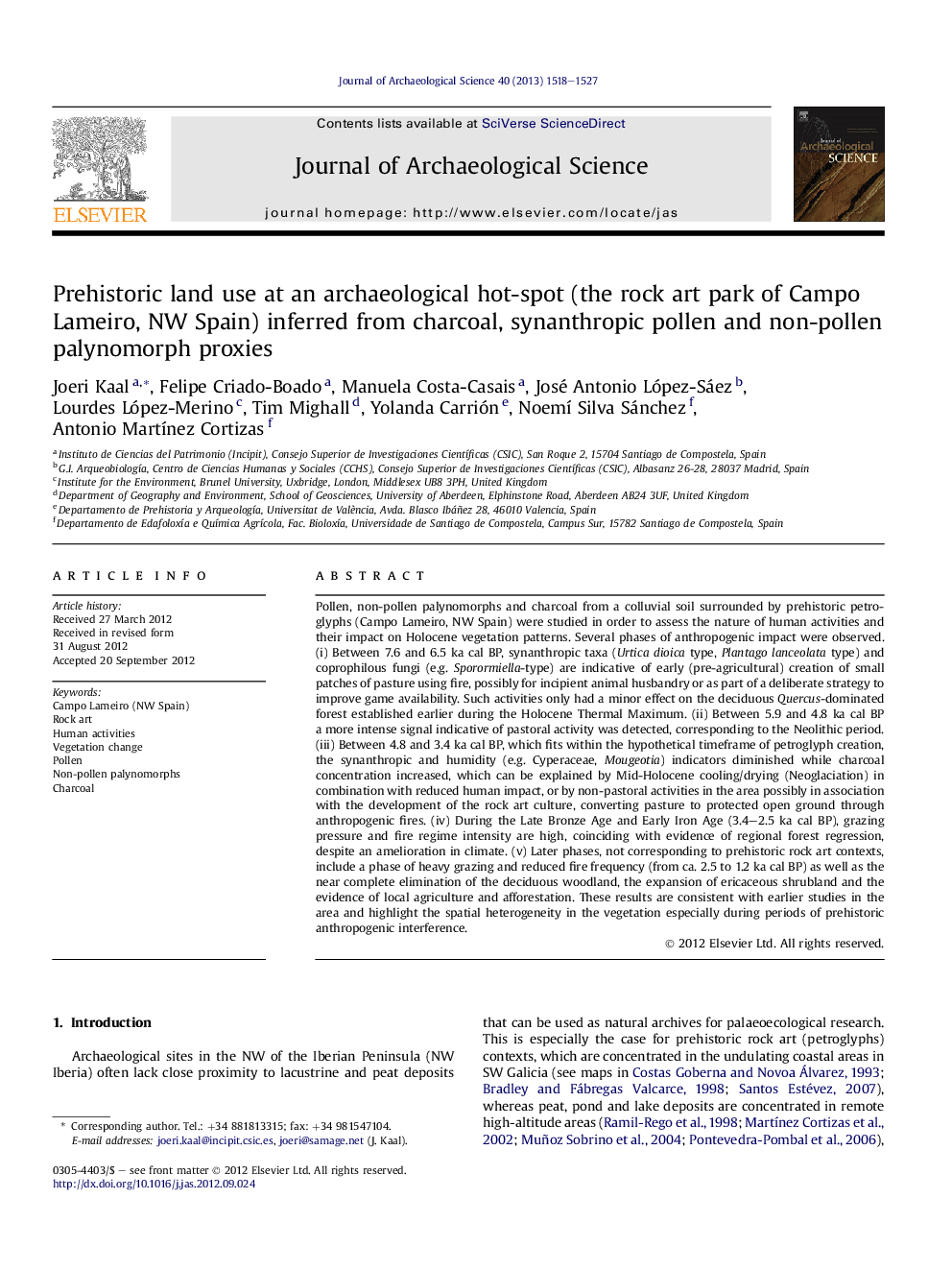| Article ID | Journal | Published Year | Pages | File Type |
|---|---|---|---|---|
| 1035445 | Journal of Archaeological Science | 2013 | 10 Pages |
Pollen, non-pollen palynomorphs and charcoal from a colluvial soil surrounded by prehistoric petroglyphs (Campo Lameiro, NW Spain) were studied in order to assess the nature of human activities and their impact on Holocene vegetation patterns. Several phases of anthropogenic impact were observed. (i) Between 7.6 and 6.5 ka cal BP, synanthropic taxa (Urtica dioica type, Plantago lanceolata type) and coprophilous fungi (e.g. Sporormiella-type) are indicative of early (pre-agricultural) creation of small patches of pasture using fire, possibly for incipient animal husbandry or as part of a deliberate strategy to improve game availability. Such activities only had a minor effect on the deciduous Quercus-dominated forest established earlier during the Holocene Thermal Maximum. (ii) Between 5.9 and 4.8 ka cal BP a more intense signal indicative of pastoral activity was detected, corresponding to the Neolithic period. (iii) Between 4.8 and 3.4 ka cal BP, which fits within the hypothetical timeframe of petroglyph creation, the synanthropic and humidity (e.g. Cyperaceae, Mougeotia) indicators diminished while charcoal concentration increased, which can be explained by Mid-Holocene cooling/drying (Neoglaciation) in combination with reduced human impact, or by non-pastoral activities in the area possibly in association with the development of the rock art culture, converting pasture to protected open ground through anthropogenic fires. (iv) During the Late Bronze Age and Early Iron Age (3.4–2.5 ka cal BP), grazing pressure and fire regime intensity are high, coinciding with evidence of regional forest regression, despite an amelioration in climate. (v) Later phases, not corresponding to prehistoric rock art contexts, include a phase of heavy grazing and reduced fire frequency (from ca. 2.5 to 1.2 ka cal BP) as well as the near complete elimination of the deciduous woodland, the expansion of ericaceous shrubland and the evidence of local agriculture and afforestation. These results are consistent with earlier studies in the area and highlight the spatial heterogeneity in the vegetation especially during periods of prehistoric anthropogenic interference.
► Palaeoecological study of land use in rock art context (NW Iberia). ► Human impact and forest regression since 7600 cal BP, mainly by fire and grazing. ► Enhanced fire regime and cease in pastoral activities ca. 4800–3400 cal BP. ► Could be related to enhanced visibility of the area in rock art contexts. ► Land use and human impact on vegetation strong local character.
